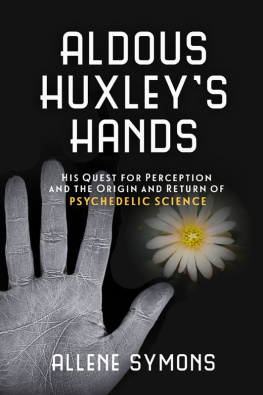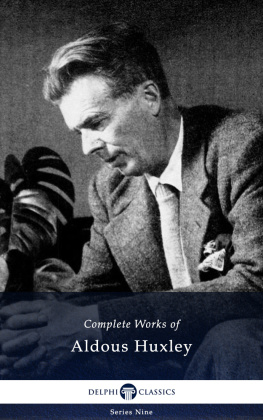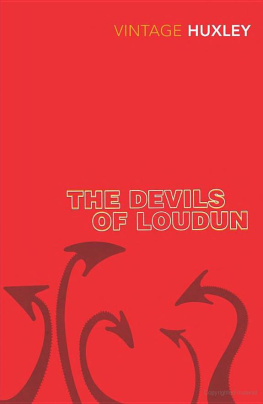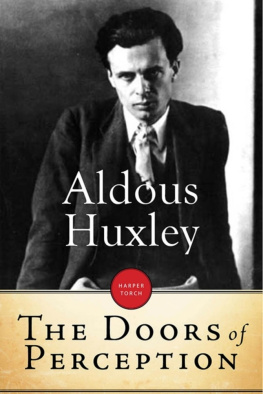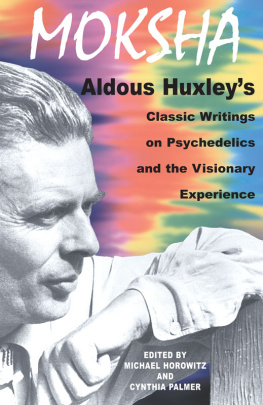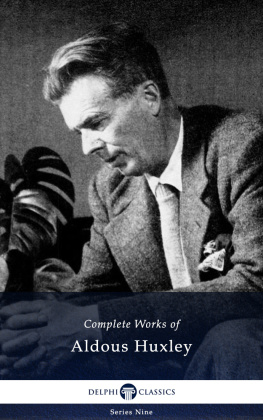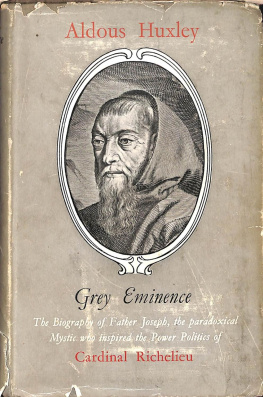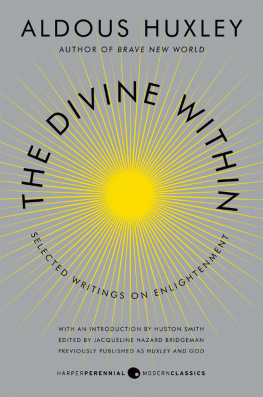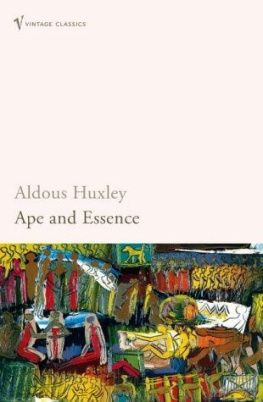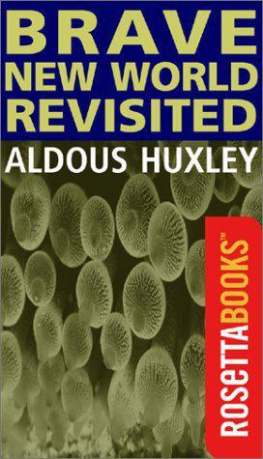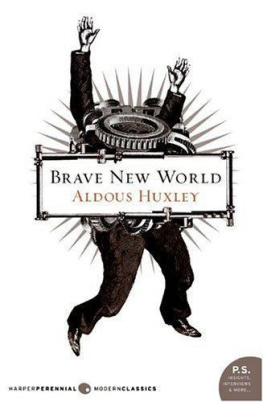
Writing about a life like Aldous Huxley's and a cultural history as colorful as psychedelics often meant deciding what, or which version, to include or set aside.
A reader may wonder about the less-familiar spelling mescalin instead of mescaline, referring to the substance Humphry Osmond gave Huxley in May of 1953. I chose the shorter version as it was used in all the Huxley-Osmond correspondence.
Huxley's quest for perception gave rise to the Tuesday night salon and experiments with mescalin and LSD between the early 1950s and 1963. From this point forward I constructed a bridge to the post-2000 return of psychedelic science with a focus on the classic hallucinogens. Other authors (some of whose works are noted in the bibliography) provide details about the people and profusion of synthetics involved in the psychedelic movement between the later 1960s and today.
My childhood link to Aldous Huxley's life began with discovering long-forgotten boxes, but asking my father about their contents could only take me so far. I wish to acknowledge those who provided valuable guidance along the way, starting with John Smythies of the Center for Brain and Cognition at the University of California, San Diego, who played a key role in the 1950s flowering of psychedelic science. Dr. Smythies shared his memoirs, letters, and photographs. What I learned from our conversations provided the initial shape of this book.
Chances are the project would have stalled without the amazing support of Euphemia Osmond Blackburn, whose father is largely credited with sparking the midcentury ascent of psychedelic science. Thanks to Fee, I was able to study the original Huxley-Osmond letters as well as unpublished photographs, some of which appear in this book.
Those two personal connections came about because of William Rosar, a research associate who introduced me to his UC San Diego colleague, John Smythies. I am also most grateful to Bill for providing suggestions for early drafts of the manuscript.
I needed professional feedback when writing about the fields of psychiatry and psychedelic science, and for this I am most grateful to Edward Kaufman for his advice and critiques. I also want to thank Charles S. Grob of Harbor-UCLA Medical Center and the Los Angeles Biomedical Research Institute, who generously gave of his time both by telephone and through email. Thanks, too, to Rick Doblin of the Multidisciplinary Association for Psychedelic Studies (MAPS) for permission to use his comments from a launch event for a new area of clinical research in psychedelic medicine.
Patricia Scheifler, director of Partnership for Recovery in Sylacauga, Alabama, kindly forwarded copies of the last few letters exchanged between Osmond and Huxley. I want to thank Stephanie Starr for the captivating book-cover concept, also Lee Muhl for sharing his memories and Marc Loge for his guided tour and stories of the Los Angeles Statler Hotel in its heyday.
Speaking of guides, Anne Barry, co-owner of the Huxleys former ranch in the Mojave Desert at Llano, showed me around the property and pointed out surviving features associated with telling moments in the Huxleys marriage. Afterward she connected me with her neighbor Siggy Wessberg, who recalled an unusual dinner with Uncle Aldous.
A dozen years ago, around the beginning of this project, portrait artist Don Bachardy helped me arrange an interview with Laura Huxley. For that alone I am deeply grateful. Then, a decade later, he told me what it was like when Aldous Huxley sat for his portrait in 1962 and kindly gave his permission for that same drawingwhich became one of the iconic images of the authorto appear in this book.
Among other permissions, I was fortunate to enjoy the cordial cooperation of Jim Spisak, Executive Director of the Aldous and Laura Huxley Literary Trust, as well as Samantha Shea at the Georges Borchardt agency. Also most helpful was Octavio Olvera of the Charles E. Young Research Library, Department of Special Collections, at UCLA.
I wish to recognize and thank the many people at Prometheus Books who gave their close and nuanced attention to the manuscript as it progressed through the detailed editing phase toward becoming a finished book, including Steven Mitchell, Peter Lukasiewicz, Catherine Roberts-Abel, Jackie Cooke, Sheila Stewart, and, for his efforts at outreach, Jake Bonar.
For the summer days I spent as a reader, I am grateful to the Huntington Library. Also to my Santa Ana College department chair, C. W. Little, who has supported this project from the start, as more recently has my SAC colleague Martin Syjuco. Additionally, I treasure the years of friendship and critiques provided by my Monday night writers group: Pam Tallman, P. J. Penman, Maralys Wills, Erv Tibbs, Terry Black, and Barbara French.
As soon as I met literary agent Dana Newman, I knew I would be in good hands. Always responsive and gracious, Dana encouraged and inspired me. In countless ways she made it happen; she found this book a home. In our literal home, my husband, Alan, stood by me and supported a sustained effort from the sidelines, overlooking bouts of crabbiness, stacks of research materials, and the pesky litter of sticky notes.
Unfortunately, I cannot thank Laura Archera Huxley, a lovely and most unusual woman, who passed away in December of 2007. Nor can I thank in any ordinary way my father, Howard, and my mother, Wanda, who raised me in a home where extraordinary perception was valued and considered worth pursuing. I wish they had lived to see Aldous Huxley's Hands.

Bedford, Sybille. Aldous Huxley: A Biography. Chicago: Ivan R. Dee. 1973.
. Quicksands: A Memoir. New York: Counterpoint, 2005.
Brown, David Jay. The New Science of Psychedelics: At the Nexus of Culture, Consciousness, and Spirituality. Rochester, VT: Park Street Press, 2013.
Clark, Ronald W. The Huxleys. New York: McGraw Hill, 1968.
Doblin, Rick, and Brad Burgee. Manifesting Minds: A Review of Psychedelics in Science, Medicine, Sex and Spirituality. Berkeley, CA: Evolver Editions, 2014.
Dunaway, David King. Huxley in Hollywood. New York: Harper & Row, 1989.
. Aldous Huxley Recollected: An Oral History. Walnut Creek, CA: Alta Mira Press, 1999.
Dyck, Erika. Psychedelic Psychiatry: LSD From Clinic to Campus. Baltimore: Johns Hopkins University Press, 2008.
Engel, Jonathan. American Therapy. New York: Gotham Books, 2009.
Greenfield, Robert. Timothy Leary: A Biography. Orlando, FL: Harcourt, 2006.
Grob, Charles S., ed. Hallucinogens: A Reader. New York: Jeremy P. Tarcher, 2002.
Hagerty, Barbara Bradley. Fingerprints of God: The Search for the Science of Spirituality. New York: Riverhead Books, 2009.
Heard, Gerald. Pain, Sex and Time: A New Outlook on Evolution and the Future of Man. New York: Harper and Brothers, 1939.
Hofmann, Albert. LSD: My Problem Child. Los Angeles: J. P. Tarcher, 1983.
Horn, Stacy. Unbelievable: Investigations into Ghosts, Poltergeists, Telepathy, and other Unseen Phenomena, from the Duke Parapsychology Laboratory. New York: HarperCollins, 2009.
Horowitz, Michael, and Cynthia Palmer, eds. Moksha: Aldous Huxley's Classic Writings on Psychedelics and the Visionary Experience. Rochester, VT: Park Street Press, 1999.
Huxley, Aldous. After Many a Summer Dies the Swan. New York: Harper Colophon, 1983.
. Antic Hay. New York: Random House Modern Library, 1932.
Next page
